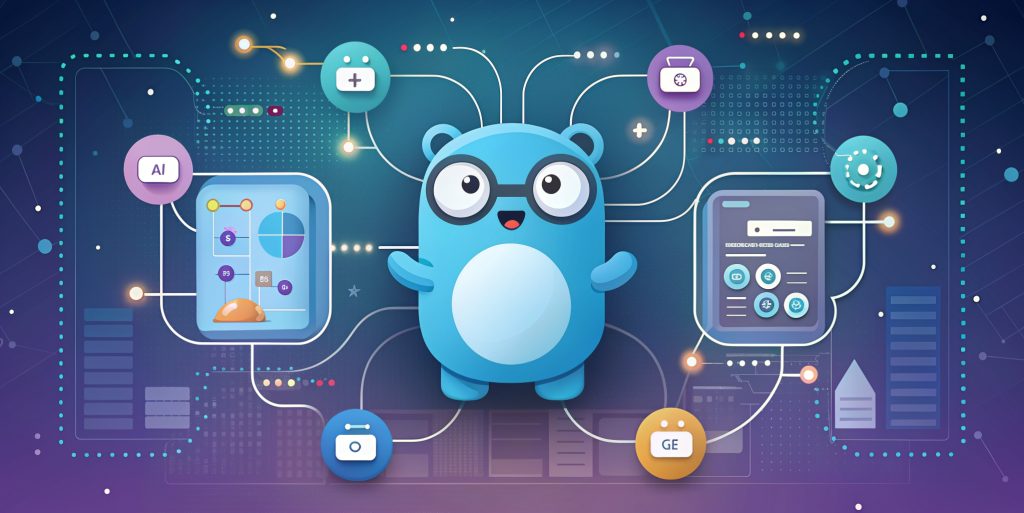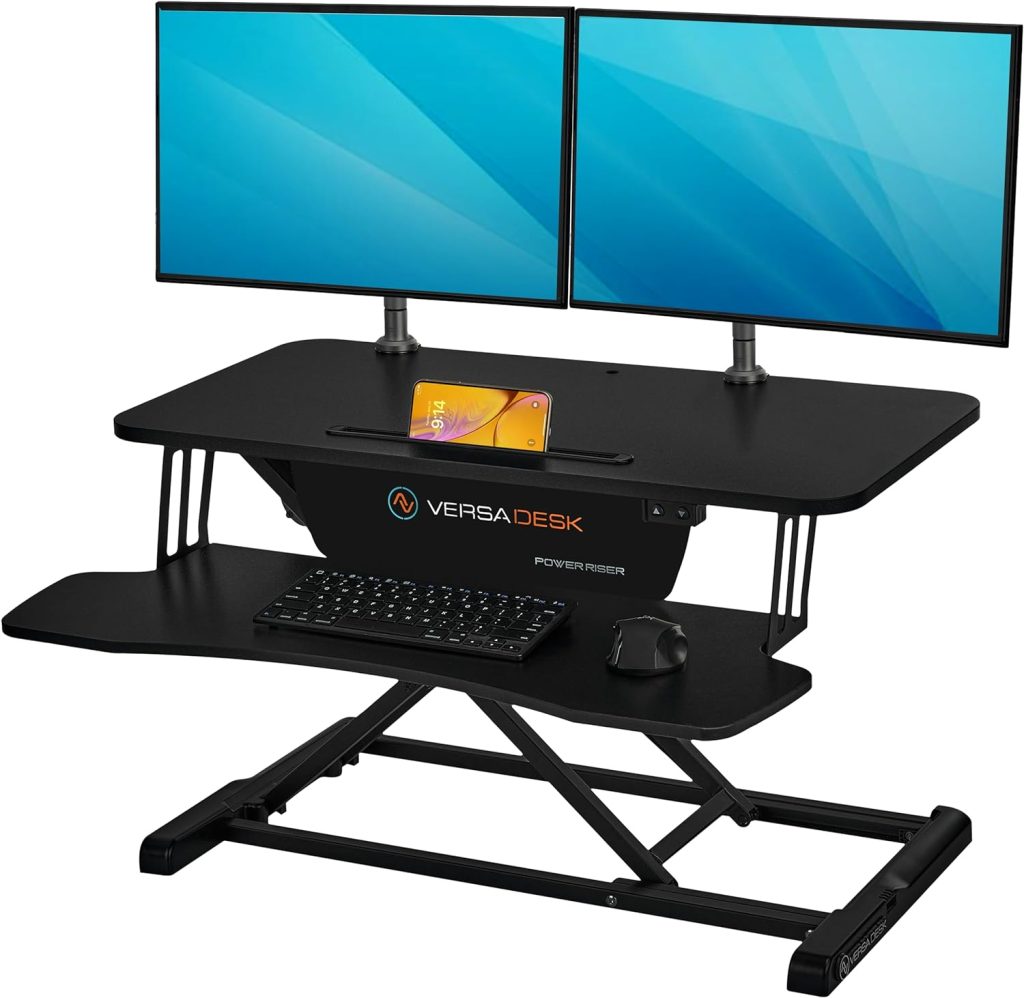Discover the secrets to mastering Golang interfaces for cleaner, more efficient code. If you’re a developer diving into the world of Go, understanding interfaces is essential for writing clean, efficient code. In this blog post, we’ll take a deep dive into interfaces, exploring what they are, how to declare and implement them, how to compose interfaces, leverage polymorphism, and best practices for using them effectively in your Go projects.
So, what exactly are interfaces? Think of interfaces as contracts. They define a set of methods that a type must implement to satisfy the interface. This allows for polymorphism, where different types can be treated uniformly if they implement the same interface. This concept might sound abstract at first, but as we delve into it, you’ll see how powerful and flexible interfaces can be in your Go programs.
In this guide, we’ll start by laying down the foundation, understanding the basics of interfaces in Chapter 1. We’ll then move on to declaring and implementing interfaces in Chapter 2, where you’ll learn how to define your own interfaces and make your types adhere to them. Interface composition will be the focus of Chapter 3, where we’ll explore how to build complex interfaces by combining smaller ones.
Chapter 4 will be all about polymorphism – one of the most exciting features enabled by interfaces. You’ll discover how interfaces allow you to write code that works with any type that satisfies a particular interface, promoting flexibility and reusability in your codebase.
Lastly, in Chapter 5, we’ll wrap up with some best practices for using interfaces in your Go projects. You’ll learn tips and tricks to make your code more maintainable, readable, and robust by leveraging interfaces effectively.
Whether you’re a beginner exploring the basics or an experienced developer looking to level up your Go skills, this guide will provide you with the knowledge and insights you need to become proficient in using interfaces in GoLang. So, let’s dive in and unlock the full potential of interfaces in your Go projects!
1. Understanding Interfaces
We’ll start by laying down the foundation, understanding what interfaces are, why they are essential in GoLang, and how they contribute to writing clean and efficient code.
What are Interfaces?
Let’s begin with the basics. In GoLang, an interface is a type that specifies a set of method signatures. These method signatures serve as a contract that defines the behavior of the interface. Any type that implements all the methods specified in the interface implicitly satisfies the interface.
To put it simply, an interface defines what methods a type must have, but it does not provide the implementation details of those methods. Instead, it leaves the implementation up to the types that choose to implement the interface.
Why Interfaces Matter
Interfaces play a crucial role in GoLang for several reasons:
- Promoting Polymorphism: One of the most significant advantages of interfaces is that they enable polymorphism. Polymorphism allows different types to be treated uniformly if they satisfy the same interface. This promotes code flexibility and reusability by decoupling code from specific implementations.
- Enforcing Contracts: Interfaces act as contracts between different parts of your code. They specify the methods that a type must implement, ensuring that all implementing types adhere to the same behavior. This helps maintain consistency and predictability in your codebase.
- Facilitating Composition: Interfaces can be composed of other interfaces, allowing you to build complex behaviors from simpler ones. This promotes code modularity and makes it easier to reason about the functionality of your code.
- Testing and Mocking: Interfaces play a vital role in writing testable code. By defining interfaces for your dependencies, you can easily create mock implementations for testing purposes. This enables you to isolate components during testing and write more robust tests.
Declaring Interfaces
In GoLang, declaring an interface is straightforward. You use the type keyword followed by the interface name and a set of method signatures enclosed in curly braces. Here’s a simple example:
type Shape interface {
Area() float64
Perimeter() float64
}In this example, we define an interface named Shape with two method signatures: Area() and Perimeter(), both returning float64 values. Any type that implements these two methods automatically satisfies the Shape interface.
Implementing Interfaces
Once an interface is declared, any type can choose to implement it by providing definitions for all the methods specified in the interface. There’s no explicit declaration of intent to implement an interface like in some other languages. If a type implements all the methods of an interface, it implicitly satisfies the interface.
Let’s consider an example where we have a Circle type and a Rectangle type, both implementing the Shape interface:
type Circle struct {
Radius float64
}
func (c Circle) Area() float64 {
return math.Pi * c.Radius * c.Radius
}
func (c Circle) Perimeter() float64 {
return 2 * math.Pi * c.Radius
}
type Rectangle struct {
Width float64
Height float64
}
func (r Rectangle) Area() float64 {
return r.Width * r.Height
}
func (r Rectangle) Perimeter() float64 {
return 2 * (r.Width + r.Height)
}In this example, both the Circle and Rectangle types implement the Shape interface by providing definitions for the Area() and Perimeter() methods. As a result, they can be treated as Shape instances wherever the Shape interface is expected.
Conclusion
We’ve covered the basics of interfaces in GoLang. We’ve learned what interfaces are, why they matter, how to declare them, and how to implement them. Interfaces are a powerful tool in GoLang for promoting polymorphism, enforcing contracts, facilitating composition, and writing testable code.
2. Declaring and Implementing Interfaces
We’ll delve deeper into the process of declaring interfaces and implementing them in your Go programs. We’ll explore various techniques and best practices for declaring interfaces effectively and implementing them in your types.
Declaring Interfaces Effectively
When declaring interfaces in GoLang, it’s essential to follow some best practices to ensure clarity, flexibility, and ease of use. Here are some tips for declaring interfaces effectively:
- Keep Interfaces Small and Focused: It’s generally a good practice to keep interfaces small and focused on a specific set of related methods. This promotes code clarity and makes it easier for types to implement only the methods they need, rather than being burdened with unnecessary methods.
- Use Single Method Interfaces: In many cases, you’ll find that interfaces with a single method are sufficient to capture a specific behavior. Single method interfaces are more flexible and can be implemented by a wider range of types, promoting code reuse and composability.
- Name Interfaces Descriptively: Choose descriptive names for your interfaces that convey their purpose and behavior. This makes your code more readable and understandable, both for yourself and for others who may work with your code in the future.
- Prefix Interfaces with “er”: A common convention in GoLang is to prefix interfaces with “er” when they represent actions or behaviors. For example,
Reader,Writer,Formatter, etc. This convention helps to quickly identify interfaces and their purpose in your codebase.
Example: Reader Interface
Let’s illustrate these principles with an example. Suppose we want to define an interface for types that can read data. We’ll name our interface Reader and define a single method Read() that reads data from a source and returns it along with any error encountered.
type Reader interface {
Read() ([]byte, error)
}This Reader interface follows the best practices we’ve discussed. It’s small and focused, with a single method Read(), and it’s named descriptively to convey its purpose.
Implementing Interfaces
Once an interface is declared, any type can choose to implement it by providing definitions for all the methods specified in the interface. Let’s continue with our example and implement the Reader interface for a file type:
type FileReader struct {
FilePath string
}
func (f FileReader) Read() ([]byte, error) {
data, err := ioutil.ReadFile(f.FilePath)
if err != nil {
return nil, err
}
return data, nil
}In this example, we define a FileReader type with a FilePath field representing the path to the file to be read. We then implement the Read() method for the FileReader type, which reads data from the file specified by FilePath and returns it along with any error encountered.
Interface Satisfaction
In GoLang, a type implicitly satisfies an interface if it implements all the methods specified in the interface. This means that you don’t need to explicitly declare that a type implements an interface – as long as it provides implementations for all the required methods, it automatically satisfies the interface.
Conclusion
We’ve explored the process of declaring and implementing interfaces in GoLang. We’ve learned about best practices for declaring interfaces effectively, including keeping them small and focused, using descriptive names, and following naming conventions. We’ve also seen how to implement interfaces for types and how interface satisfaction works in GoLang.
3. Interface Composition
We’ll explore the concept of interface composition – a powerful technique that allows you to build complex behaviors by combining multiple interfaces. We’ll learn how interface composition works, why it’s useful, and how to effectively use it in your Go programs.
Understanding Interface Composition
Interface composition in GoLang refers to the practice of combining multiple interfaces to define a new interface. This new interface inherits all the method signatures from the individual interfaces, effectively merging their behaviors into a single interface.
Interface composition is achieved using embedding – a feature of the Go language that allows one struct or interface type to become a part of another type. When a type embeds an interface, it inherits all the method signatures of that interface.
Why Use Interface Composition?
Interface composition offers several benefits that make it a valuable tool in GoLang development:
- Modularity: By breaking down complex behaviors into smaller, composable interfaces, you can create more modular and maintainable code. Each interface represents a specific aspect of functionality, making it easier to reason about and reuse in different contexts.
- Flexibility: Interface composition allows you to mix and match behaviors from different interfaces, giving you the flexibility to create tailored interfaces for specific use cases. This flexibility promotes code reuse and adaptability, as you can combine interfaces in various ways to meet your requirements.
- Simplification: Interface composition simplifies your code by reducing redundancy and promoting a clear separation of concerns. Rather than defining monolithic interfaces with all possible methods, you can define smaller, focused interfaces and compose them as needed, resulting in cleaner and more concise code.
Example: ReaderWriter Interface
Let’s illustrate interface composition with an example. Suppose we want to define an interface for types that can both read and write data. We’ll start by declaring two separate interfaces for reading and writing:
type Reader interface {
Read() ([]byte, error)
}
type Writer interface {
Write(data []byte) error
}Now, we can define a new interface called ReaderWriter by embedding both the Reader and Writer interfaces:
type ReaderWriter interface {
Reader
Writer
}The ReaderWriter interface inherits all the method signatures from both the Reader and Writer interfaces, allowing types that implement ReaderWriter to both read and write data.
Implementing Interface Composition
Once we’ve defined the composite interface, implementing it is straightforward. Types can choose to implement the ReaderWriter interface by providing definitions for all the methods inherited from both the Reader and Writer interfaces.
type FileRW struct {
FilePath string
}
func (f FileRW) Read() ([]byte, error) {
// Read data from file
}
func (f FileRW) Write(data []byte) error {
// Write data to file
}In this example, we define a FileRW type that implements the ReaderWriter interface by providing implementations for both the Read() and Write() methods. This allows FileRW instances to read and write data to and from a file.
Conclusion
We’ve explored the concept of interface composition in GoLang. We’ve learned how interface composition allows you to build complex behaviors by combining multiple interfaces, promoting modularity, flexibility, and simplification in your code.
We’ve seen how to define composite interfaces by embedding other interfaces and how to implement them in types by providing definitions for the inherited methods. Interface composition is a powerful technique that enhances the expressiveness and maintainability of your Go programs.
4. Polymorphism with Interfaces
We’ll explore the concept of polymorphism – one of the most powerful features enabled by interfaces. We’ll learn what polymorphism is, how it works in GoLang, and how interfaces facilitate polymorphic behavior in your programs.
Understanding Polymorphism
Polymorphism is a fundamental concept in object-oriented programming that allows objects of different types to be treated as instances of a common superclass or interface. In simpler terms, polymorphism enables code to work with objects of multiple types in a uniform manner, without needing to know the specific type of each object at compile time.
In GoLang, polymorphism is achieved through interfaces. Interfaces define a set of method signatures, and any type that implements these methods implicitly satisfies the interface. This means that you can write code that operates on interfaces, allowing it to work with any type that satisfies the interface, regardless of the specific underlying type.
Benefits of Polymorphism
Polymorphism offers several benefits that make it a valuable tool in software development:
- Flexibility: Polymorphic code can work with a wide range of types, making it highly adaptable and flexible. This promotes code reuse and simplifies maintenance, as the same code can be applied to different types without modification.
- Decoupling: Polymorphism allows you to decouple code from specific implementations, promoting loose coupling and modular design. By writing code against interfaces rather than concrete types, you can reduce dependencies and make your code more modular and reusable.
- Extensibility: Polymorphism makes it easy to extend the functionality of your code by adding new types that satisfy existing interfaces. You can introduce new types without modifying existing code, promoting scalability and future-proofing your applications.
Example: Polymorphic Behavior
Let’s illustrate polymorphic behavior with an example. Suppose we have an interface called Shape with a method Area() that calculates the area of a shape. We also have two types, Circle and Rectangle, both of which implement the Shape interface:
type Shape interface {
Area() float64
}
type Circle struct {
Radius float64
}
func (c Circle) Area() float64 {
return math.Pi * c.Radius * c.Radius
}
type Rectangle struct {
Width float64
Height float64
}
func (r Rectangle) Area() float64 {
return r.Width * r.Height
}Now, let’s write a function called CalculateTotalArea() that calculates the total area of a slice of shapes, regardless of whether they are circles or rectangles:
func CalculateTotalArea(shapes []Shape) float64 {
totalArea := 0.0
for _, shape := range shapes {
totalArea += shape.Area()
}
return totalArea
}In this example, the CalculateTotalArea() function operates on a slice of Shape interfaces. It doesn’t need to know the specific types of the shapes – it simply calls the Area() method on each shape, and polymorphism takes care of the rest. This allows us to calculate the total area of a mixed collection of circles and rectangles using a single, polymorphic function.
Conclusion
We’ve explored the concept of polymorphism in GoLang and how it is facilitated by interfaces. We’ve learned that polymorphism allows code to work with objects of multiple types in a uniform manner, promoting flexibility, decoupling, and extensibility in your programs.
We’ve seen how interfaces enable polymorphic behavior by defining a common set of method signatures that can be implemented by different types. This allows you to write code that operates on interfaces rather than concrete types, making your code more flexible, reusable, and maintainable.
5. Best Practices for Using Interfaces in GoLang
We’ll delve into best practices for using interfaces effectively in your Go programs. Interfaces are a powerful tool for promoting code flexibility, reusability, and maintainability, but using them correctly requires careful consideration and adherence to best practices.
Designing Interfaces Effectively
When designing interfaces in GoLang, it’s essential to follow some best practices to ensure clarity, flexibility, and ease of use. Here are some tips for designing interfaces effectively:
- Keep Interfaces Small and Focused: As mentioned earlier, it’s generally a good practice to keep interfaces small and focused on a specific set of related methods. This promotes code clarity and makes it easier for types to implement only the methods they need.
- Follow the Single Responsibility Principle (SRP): Each interface should have a single responsibility or represent a single concept. Avoid creating overly broad interfaces that try to cover too much functionality. Instead, break down complex behaviors into smaller, more focused interfaces.
- Use Interfaces Sparingly: While interfaces are a powerful tool, they should be used judiciously. Don’t create interfaces unless they are truly needed, and don’t force interfaces onto types that don’t need them. Only use interfaces when they provide clear benefits in terms of code flexibility and maintainability.
- Focus on Behavior, Not Implementation: Interfaces should focus on defining the behavior that types must adhere to, rather than prescribing a specific implementation. This allows for greater flexibility and promotes code reuse by decoupling code from specific implementations.
Interface Naming Conventions
Naming interfaces correctly is crucial for ensuring readability and understanding in your codebase. Here are some naming conventions to follow when naming interfaces in GoLang:
- Use Descriptive Names: Choose descriptive names for your interfaces that clearly convey their purpose and behavior. A well-chosen name should immediately communicate what the interface represents and how it should be used.
- Prefix Interfaces with “er”: A common convention in GoLang is to prefix interfaces with “er” when they represent actions or behaviors. For example,
Reader,Writer,Formatter, etc. This convention helps to quickly identify interfaces and their purpose in your codebase. - Avoid “I” Prefix: Unlike some other languages, GoLang does not typically use an “I” prefix for interface names. Instead, focus on choosing descriptive names that accurately reflect the interface’s purpose and behavior.
Using Interfaces in Function Signatures
Interfaces are commonly used in function signatures to promote code flexibility and testability. When designing functions that operate on interfaces, consider the following best practices:
- Accept Interfaces, Return Concrete Types: Functions should generally accept interfaces as parameters rather than concrete types. This promotes code flexibility by allowing callers to pass in any type that satisfies the interface.
- Return Concrete Types, Not Interfaces: Similarly, functions should return concrete types rather than interfaces whenever possible. This allows callers to work with the returned values directly, without needing to type assert them to access specific methods.
Writing Testable Code with Interfaces
Interfaces play a crucial role in writing testable code in GoLang. By defining interfaces for your dependencies, you can easily create mock implementations for testing purposes. Here are some best practices for writing testable code with interfaces:
- Use Dependency Injection: Dependency injection is a design pattern that involves passing dependencies (such as interfaces) into a function or method rather than creating them internally. This makes it easy to replace dependencies with mock implementations during testing.
- Mock Dependencies with Interfaces: When writing tests, use mock implementations of interfaces to simulate the behavior of real dependencies. Mocking allows you to isolate components under test and verify their behavior independently.
Conclusion
We’ve explored best practices for using interfaces effectively in GoLang. We’ve learned how to design interfaces that are clear, focused, and easy to use, as well as naming conventions for interfaces and guidelines for using them in function signatures.
We’ve also seen how interfaces can be used to promote testability by enabling dependency injection and mocking of dependencies. By following these best practices, you can harness the power of interfaces to write clean, flexible, and maintainable code in your Go programs.
With a solid understanding of interfaces and how to use them effectively, you’re well-equipped to leverage this powerful feature to its fullest potential in your GoLang projects. So go forth and write great code with interfaces in GoLang!







